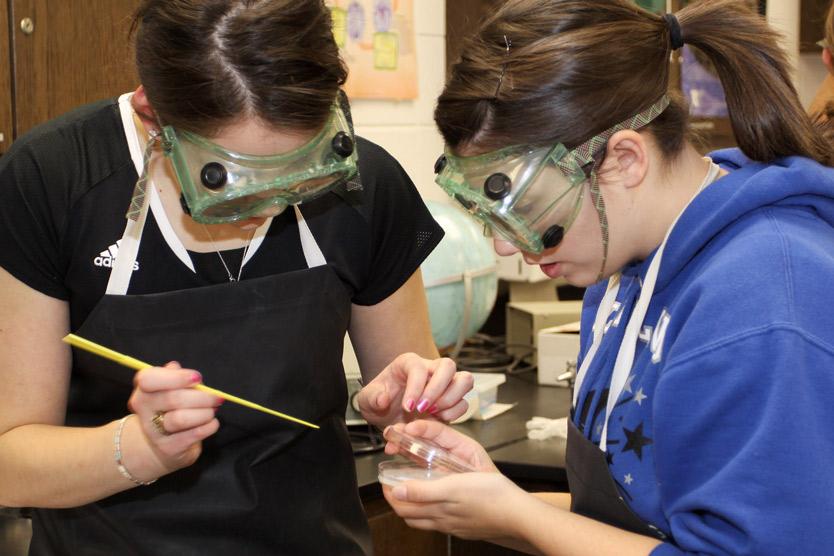
At the front of her classroom, Rhonda Knapp holds up beakers full of decomposing biomass, explaining how enzymes are working to break down the material.
“Enzymes are everywhere,” explains Knapp, a Waunakee High School science teacher. “With this focus on how enzymes are breaking down biomass, we’re getting students to think about where these cellulose-degrading microbes can be found.”
As a part of the Research Experience for Teachers (RET) program, Knapp and two other Madison-area teachers spent the summer in Great Lakes Bioenergy Research Center labs developing bioenergy-related activities for the upcoming school year.
Working with Cameron Currie, UW-Madison Associate Professor of Bacteriology, and members of his lab, Knapp developed an activity based on bioprospecting, or the search for useful microbes in the environment.
Knapp is bringing the beakers and the rest of the biofuels-inspired activity to her classroom this fall. There, her students are learning about the role of enzymes within an ecosystem and working with environmental samples that contain these hard-working microbes. They’re learning advanced lab techniques in the process, isolating the microbes and developing assays to identify cellulose degraders.
“My hope is that my students will better understand symbiosis, that we can’t do things without the help of other microbes,” says Knapp.
The benefits of the RET experience are twofold for Knapp. She not only comes away from the program with an innovative activity that exposes students to the scientific issues related to biofuels, but she also gained valuable research experience for herself.
“The community in the Currie lab was so supportive, and I really honed my lab skills,” says Knapp.
The most valuable part of the experience for Knapp is the reassurance that her students are learning relevant research skills.
“These lab techniques are things they need to know and will use,” says Knapp. “I get this justification that what I’m teaching is what researchers use in real-world labs.”
The activity is being piloted in Knapp’s Waunakee High School classroom this fall. Fulfilling the goals of the RET program, Knapp’s activity will also be available for wider use in other classrooms. Contact Leith Nye (lnye@glbrc.wisc.edu) for more information on the activity or how to bring it to your classroom.